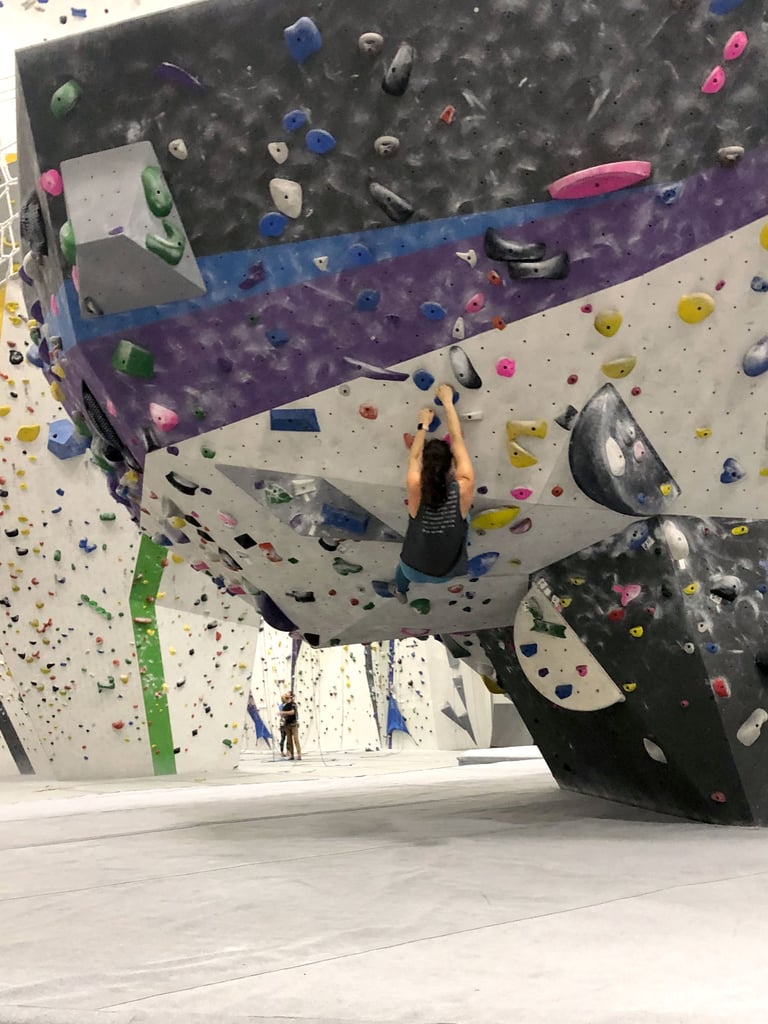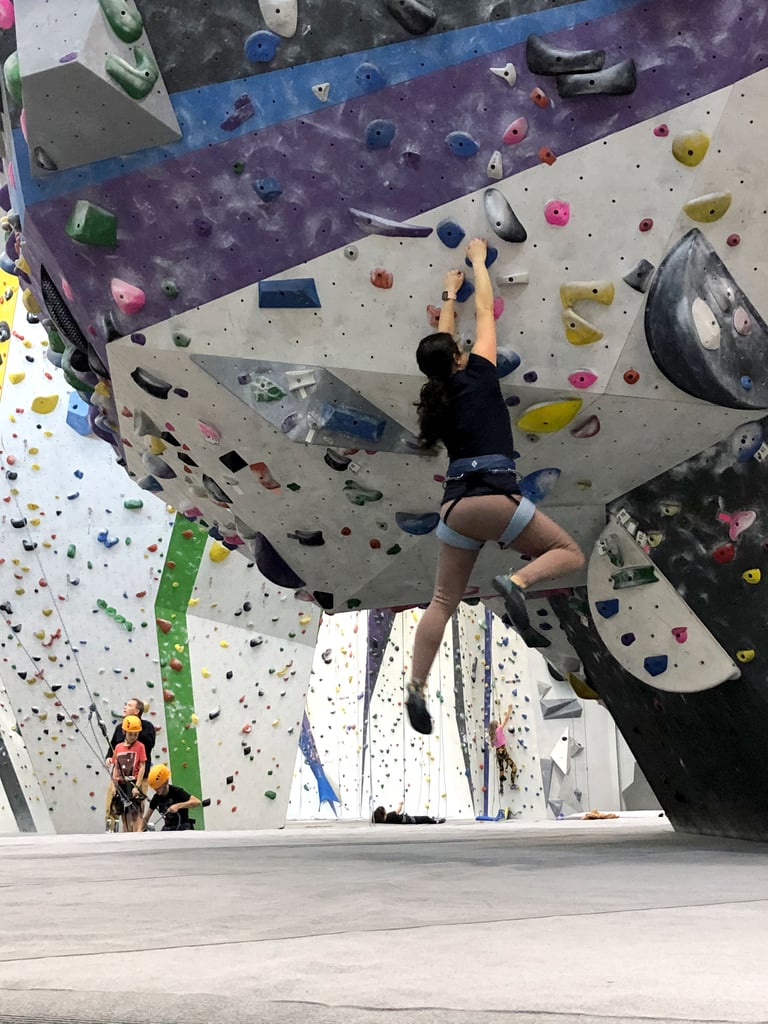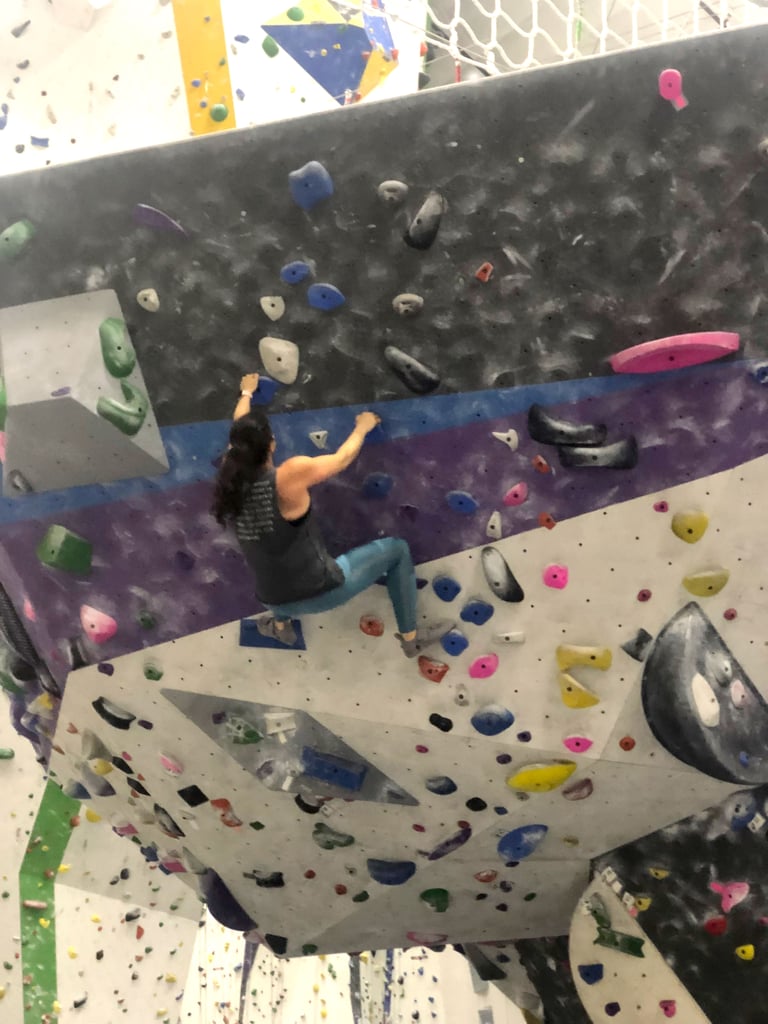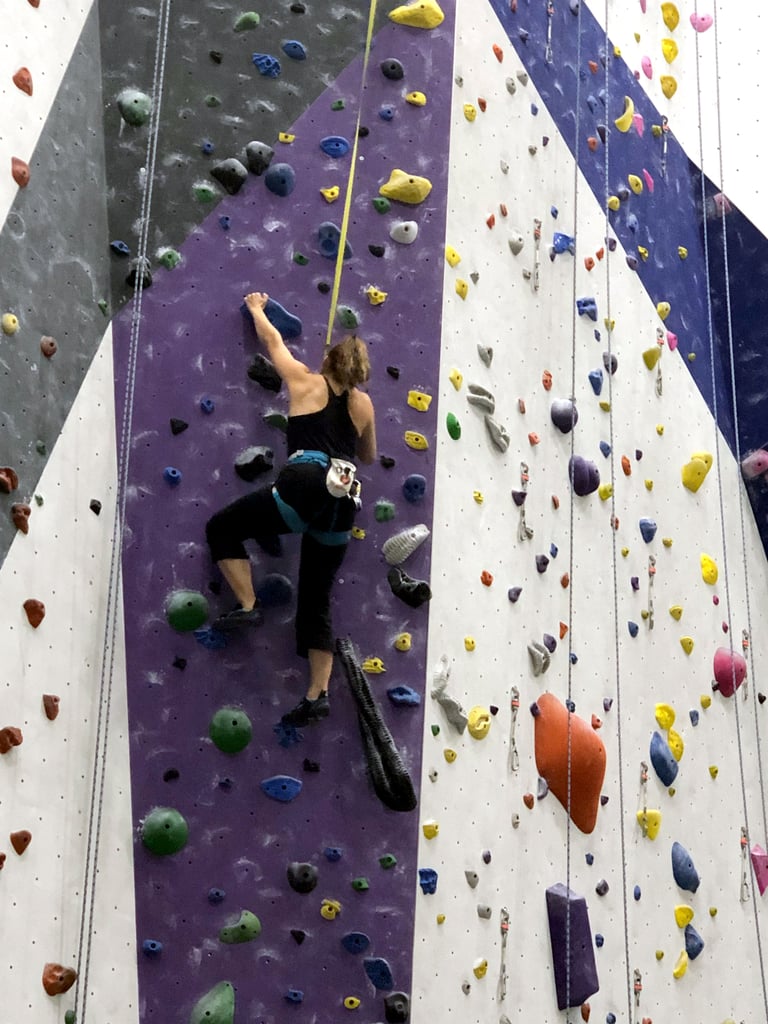My husband and I just celebrated our 11-year anniversary in August. Since spending time together is really the only gift we both wanted, I surprised him, booked a babysitter, and signed us up for an intro-to-rock-climbing class. I had always wanted to try it and thought it'd be fun to try something new and adventurous together. In the past month, I've learned a lot. If you're thinking of trying indoor rock climbing, here's what I wish I knew when I first started.
How Much Does Indoor Rock Climbing Cost?

At my gym, it's $20 a day for an adult, $5 for shoes, and $3 for a harness. You don't need to rent a harness if you just want to boulder. Bouldering means climbing on the shorter walls without a rope. If you want to climb on the higher walls, you'll need to be belayed, where a rope is tied to your harness, strung through a pully system on the very top of the wall, and held by a person below you on the ground.
Some climbers only boulder and some only use the belay; some do both. Both are different so you can try each to see which you prefer.
In order to belay someone else, you need to take a class to learn how (which costs $50 a person at my gym). After the two-hour class, once you're tested you can belay anyone. For this reason, it's nice to go climbing with a friend so you can take turns belaying one another.
Obviously these prices are for my local gym in Vermont, so it's best to call ahead to your local gym and ask for prices to see if it's something you want to financially commit to.
What If I Fall When Bouldering?

When bouldering, you can climb pretty high but without a rope to catch you, falling could result in a broken leg or arm. Learn how to fall properly and practice falling. You want to land on your feet and then roll backward onto your back. Keep your chin tucked into your chest to protect your head from slamming back. Don't try to catch yourself with your arms!
At first, practice falling from shorter heights and then practice climbing a little higher and falling. This will help you feel more confident bouldering harder, higher climbs. Also never climb above someone! If you accidentally fall you don't want to take them down with you.
What Do the Coloured Holds and Letters Mean?

On the bouldering wall, you'll notice letters and numbers and different coloured holds. At first, you can just grab and step onto whatever you want, but eventually, you'll want to challenge yourself and try the routes (or "problems") set up. These are marked by letter-number combinations on the wall that rate how hard a climb is, and you'll need to stick to only touching that one colour hold (like only blue ones as I'm doing in the photo).
For the bouldering wall, the routes are rated using the V-Scale [1], short for Vermin and named after a famous Hueco Tanks climber. Beginner boulderers should stick to routes graded with a VB (the B stands for basic or beginner), V0, V1, or V2.
For the walls where you are belayed, the routes are rated using YDS, which stands for the Yosemite Decimal System. Beginners should stick to routes between 5.2 and 5.9.
As you practice, you'll get stronger and improve your finger grip, shoulder strength, and leg strength. Just have fun and don't worry if it's hard at first. Everyone has to start somewhere!
Can I Climb By Myself?

If you go climbing alone, you can always stick to bouldering. But if you prefer being belayed, some gyms offer an auto belay system (see the yellow strap in this picture?). Two carabiners are attached to the auto belay strap; just clip and lock them to the belay loop on the front of your harness, and you're ready to climb.
Using an auto belay allows you to climb as high as you want, as fast or slow as you want, and if you fall or decide to come down, you let go of the wall and the auto belay automatically catches you and slowly lowers you down to the ground.
It's a little scary at first to be 40 feet in the air and to just let go and trust that the auto belay will catch you. So practice letting go from shorter heights to get used to that two-second free fall you'll experience before the auto belay catches you.
How Do I Get Better at Climbing?

When you first start climbing, it's OK if you're not very good. In order to improve, you need to practice! Designate a couple times each week where you'll go climbing for one to two hours.
You can also strength train to get stronger, doing upper body exercises as well as those to strengthen your core and lower body. Do bodyweight moves like planks, hollow holds [2], squats, and lunges, as well as moves that use equipment like ring rows or pull-ups, seated Russian twists with a dumbbell, and goblet squats.
Since flexibility allows you to reach for higher holds, my yoga background has helped tremendously. If you're not very flexible, do this full-body yoga sequence [3], which will not only help improve your climbing, but can also help prevent injury.
Climb with someone better than you! Find a friend at the gym who can teach you a little technique. I found that everyone is really friendly and helpful, as long as you're open to asking questions — remember they were a beginner once upon a time too!
After each session, be sure to stretch. I like to focus on my wrists, chest, shoulders, hamstrings, lower back, and hips. Here are three stretches I never forget to do [4].